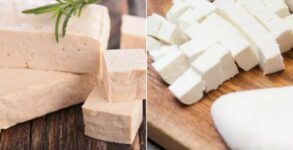The festival of Maha Shivratri is just around the corners and the devotees of Lord Shiva are all set to observe the Maha Shivratri vrat. This year Maha Shivratri will fall on March 11.
The day comes with several mythological stories. While some Puranas suggest that on this day, Lord Shiva drank poison to save the earth which made his throat blue, others believe that this day marks the wedding of Lord Shiva and Goddess Parvati.
Preparations for the celebration are already in full swing and most of the Shiva-Parvati temples are decked up beautifully. Maha Shivratri is celebrated in varied ways across the length and breadth of the country.
On Shivratri, devotees take a holy dip in the Ganga or any river in the vicinity and Shiva temples across the country see thousands of devotees with milk, fruits, and other offerings for Lord Shiva, or as he is lovingly called ‘Bholenath‘.
With Shivratri comes the Vrat dishes. Here are top 3 Vrat dishes you can prepare at home:
Singhada Seera:
Ingredients:
- 2 cup water chestnut flour
- 1 cup sugar
- 2 tablespoon ghee
- 4 teaspoon powdered black cardamom
- 2 teaspoon flaked almonds
- 2 teaspoon pistachios
Method:
- To prepare this delectable sweet, first heat ghee in a pan, and add the water chestnut flour (singhada aata) to it. Cook on a low flame for 4 minutes or till the flour changes colour to light brown. Stir continuously.
- Next, add 2 cups of warm water to the rice flour and mix well. Keep cooking on a low flame for another 4 minutes or until all the water has been absorbed. Stir continuously.
- Lastly, add sugar and mix well. Cook on a low flame for another 4 minutes, while stirring continuously.
- Switch off the flame, add cardamom powder and mix well. Transfer the prepared sheera in a serving dish, top with almonds and pistachios and serve hot.
Sabudana Thalipeeth:
Ingredients:
- 1 cup sabudana
- ¼ cup peanut
- 2 potato (boiled & mashed)
- 2 chili (finely chopped)
- 1 tsp cumin/jeera
- 1 tsp pepper (crushed)
- 1-inch ginger (grated)
- 2 tbsp coriander (finely chopped)
- 1 tsp lemon juice
- 1 tsp salt
- ¼ cup singhara ka atta/chestnut flour
- oil (for roasting)
Method:
- Pick and rinse ⅔ cup sabudana well, till you get transparent water when rinsing. soak them overnight in enough water.
- The next day, drain them really well. make sure there is no moisture in them.
- Measure and keep all the ingredients ready for making sabudana thalipeeth.
- Add 2 large or medium sized boiled, peeled and mashed potatoes to the soaked sabudana. Make sure that the mashed potatoes are warm or at room temperature.
- Do not add hot mashed potatoes to the sabudana as this will partially cook the sabudana starch and make the mixture sticky.
- Next add 1 teaspoon sugar, ½ teaspoon cumin powder, ½ inch finely chopped ginger and sendha namak (rock salt) as required.
- Also add ¼ cup chopped coriander leaves and 4 tablespoons coarsely ground roasted peanuts (bhuni moongphali).
- Finally add 1 teaspoon lemon juice.
- Apply some peanut oil on your palms. Take some portion from the mixture and begin to flatten it with your palms to a round shape. you can also flatten on a ziplock bag. i find it easier to flatten with my palms.
- Heat a nonstick frying pan. Spread 1 or 2 teaspoon of peanut oil or ghee on the pan.
- Place the flattened round (thalipeeth) on the frying pan.
- Fry till both sides are golden brown and crisp.
- Flip other side and fry till golden brown.
- If you have a large pan, you can cook 2 to 3 sabudana thalipeeth at the same time.
- Repeat and similarly pan fry the rest of the thalipeeth.
Dahi Aloo:
Ingredients:
- 4 Potatoes (Aloo) , chopped
- 1-1/2 cups Curd (Dahi / Yogurt)
- 2 tablespoons Gram flour (besan)
- 1/3 teaspoon Asafoetida (hing)
- 1 teaspoon Cumin seeds (Jeera)
- 1 sprig Curry leaves
- 1 Onion , finely chopped
- 1/2 teaspoon Ginger , finely chopped
- 1/2 teaspoon Garlic , finely chopped
- 2 Green Chillies , chopped
- 1 teaspoon Red Chilli powder
- 1-1/2 teaspoon Coriander Powder (Dhania)
- 1/2 Turmeric powder (Haldi)
- Salt , to taste
- 4 tablespoons Sunflower Oil
- Coriander (Dhania) Leaves , chopped or garnish
Method:
- To begin making Dahi Wale Aloo Recipe, first wash the potatoes thoroughly. Then pressure cook them till they are cooked soft, but not completely mushy. You can follow this method to learn how to pressure cook them.
- Once the pressure has released from the cooker, open the line, drain the water and allow the potatoes to cool. Then, peel them and roughly break into chunks.
- In a large bowl, add curd and besan with a little water and whisk them together to make a smooth batter. There should not be any lumps in the curds. Whisk till it is smooth and then set aside.
- In a wok or kadhai, warm some oil. Add cumin seeds and hing. As soon as cumin begins to crackle, add finely chopped onion and saute till the onions soften.
- Next add the finely chopped ginger, garlic and green chilies along with the curry leaves and toss them all together for a couple of minutes.
- Add the red chilli powder, coriander powder and turmeric and saute the masala well until it is cooked through and begins to release oil from the sides. If you find the masala sticking at this stage, add a little water (2 tablespoons) in it and toss well.
- Add the potatoes to the masala and mix again till the potatoes are well-coated.
- Turn the heat to low and start pouring the beaten curd over the potatoes. Mix well. Adjust salt as per your taste and close the lid to allow the curry to simmer for 5 minutes.
- Once done, turn the heat off, garnish with coriander leaves and serve with Steamed Rice or Phulkas.


















